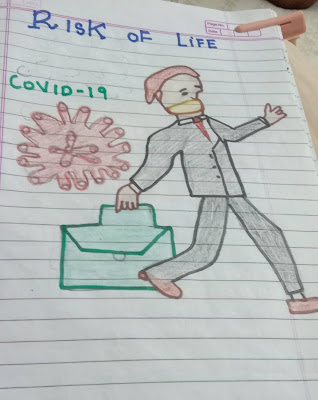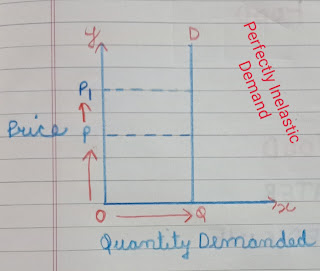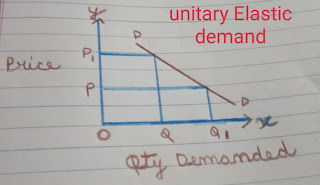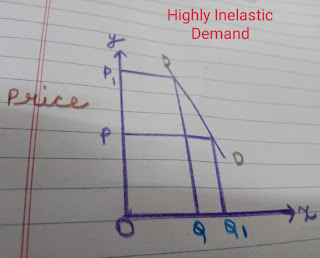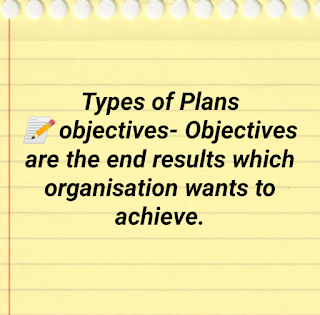Communication
"Communication is the act of sharing or exchange information &ideas, feelings."
Communication is the method to send message from one person to another.Communication is transfer information, emotions and ideas through voice,gestures expression, symbols.Communication involves one sender ,a message and a recipient.
Thus,
Communication means send message in verbal and non verbal.In communication there must be sender,receiver and communication channel .
Features of Communication...
1) Communication is necessary-communication is as necessary as blood in our life communication is very vital in every field whether it is professional & personal and social life.
2) Pervasive-communication is pervasive because communication is formed in each and every field whether it is social political professional communication is performed in everywhere that's why communication is pervasive.
3) Continous Activity-communication is continuous process because it is continuously running first communication starts with sender he encoding the idea and then he sending it to receiver with the medium of communication after then receiver encoded the message and extract information from it and understand the message and send feedback to sender this process is continous running.
'7' C of Communication...
1) Complete-Message must be complete it contains all the facts which are required by audience if message is complete it helps in taking decision .Message must be full in such a way that it leaves no question in receiver mind and it not includes a unnecessary words there is answer of who, what ,when ,where ,how and why.
2) Concise-Concise means short possible words. In communication message should be concise means it is in short possible words but it doesn't mean that it will provide less information but in this C of Communication means it does not involve unnecessary words but written in short simple way and avoid needless words and provide essential message .In this C of Communication instead of written long message we use single word but meaning is same for eg.-
3)Clear-In this 'C' of Communication means clear .If message is clear receivers understand and can taken decision easily.Clarity in message means that it clarify the ideas of sender.
4) Correct-Message must be correct.There is no error in message.If there is any error in message receiver cannot understand message properly.
5) Courteous-Courtesy is the respect that we show to others . Message should be polite,sincere, enthusiastic and reflective.It means we should include courteous words in message for eg- thank you, Excuse me,Yes sir.
6) Consideration- In this C of Communication we should take consideration the reciever problems, emotions education level before we convey our message.It means it cannot hurt audience self respect & emotions,words must be suit the needs of receiver.
7) Concreteness-In this C of Communication means our message should be clear it means it is up to the point and supported with facts and figures.So it brings confidence and easily understandable.
Communication Network techniques
Communication Network means pattern of communication which exists in organisation, pattern of communication depends upon need of organisation & attitude of superior towards subordinates.
1) Chain Network- Chain Network communication is one in which communication flow in a vertical line.It is usually two way communication.In this network communication flow from top to bottom and bottom to top in vertical line.In this network one cannot directly contact with other.
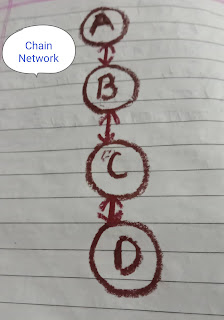 |
| Chain Network |
2) Circular Network-Circular Network is that network in which communication flow in a circular way.In this network communication pass through immediate right or left person not any other person.According to figure A can communicate with B and E not C.B can communicate with C and A.etc.In this network communication flow in circular form.
 |
| Circular Network |
3)Wheel Network or Star Network-Wheel or Star Network is that network in which organisation do not communicate directly.they communicate with one superior or manager, Manager act as a central hub of the wheel.for eg- D can communicate with B with the help of central hub they can not communicate directly ,A can communicate with C with the help of central hub (manager or supperier)..
 |
Wheel or Star Network.
4) Free Flow or decentralised Network-In this network communication flow freely,there is no restriction on the flow of communication.Members can communicate any other member freely.This is informal Network which not flow in formal lines .
Formal &Informal Communication
Formal Communication
Formal Communication is that communication Network in which communication flow in formally established channels.In formal Communication communication travels in lines of authority like top to bottom & bottom to top.it is established by the Management and whole organisation must follow this formal chain in communication.Informal CommunicationInformal Communication
Communication is that communication network which is not flow in formally established lines .it is not regulated by the formal rules and procedures.it is flow in any direction it is not establish by management.it is establish by the nature of people to socialise and communicate with others like Grapevine
|

